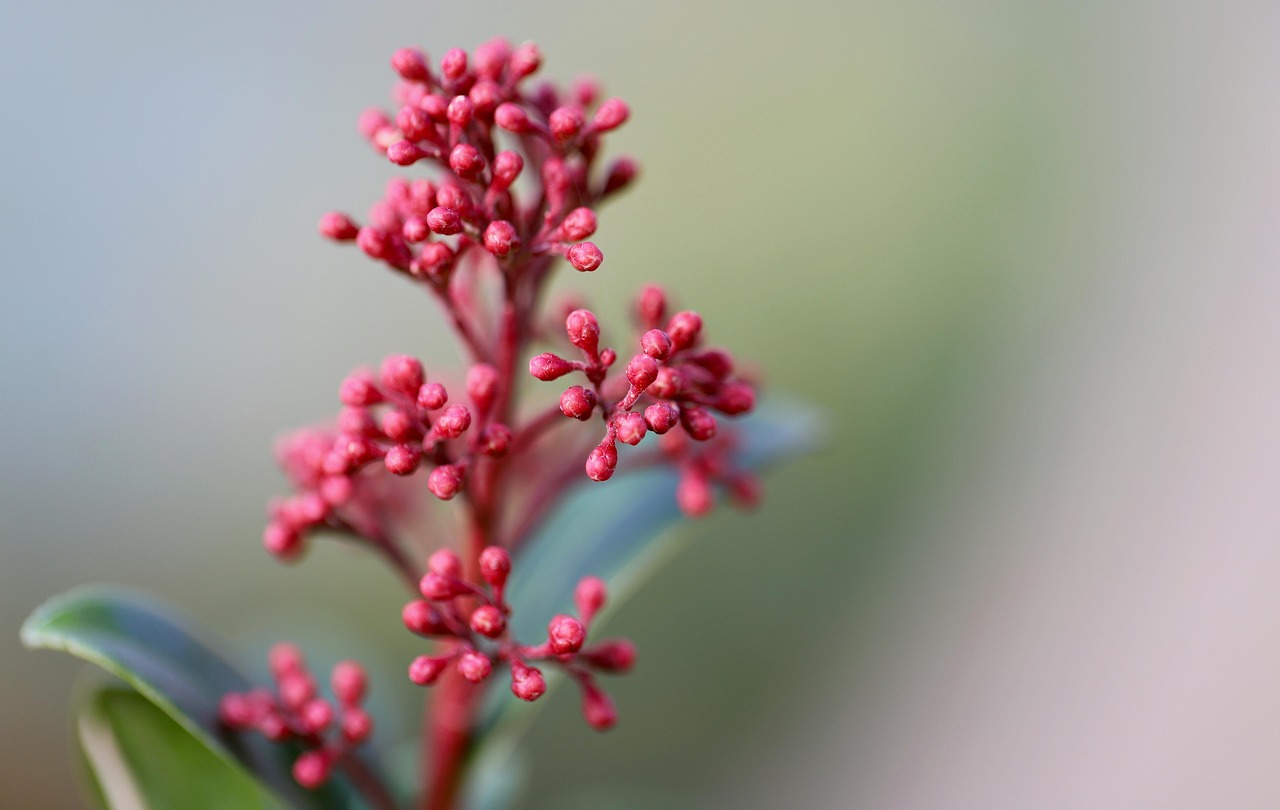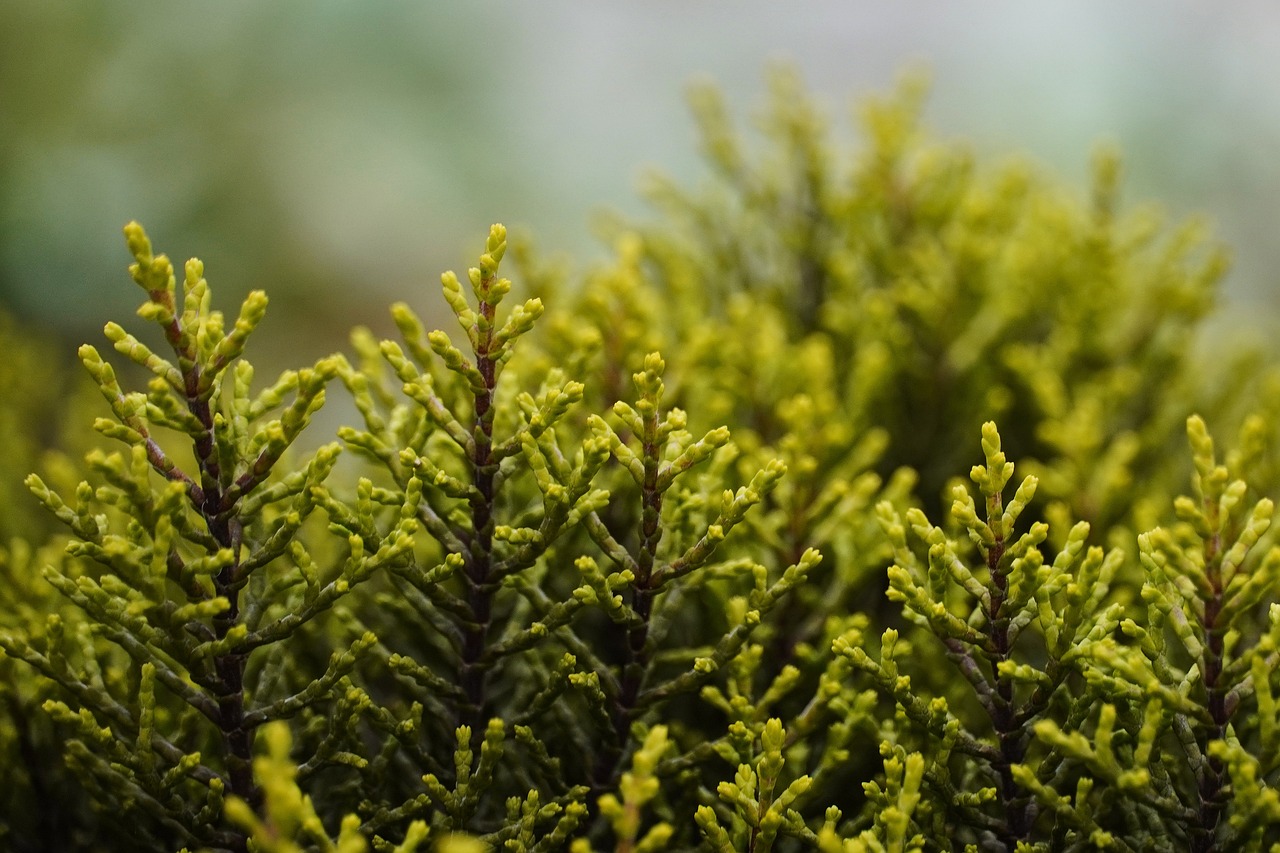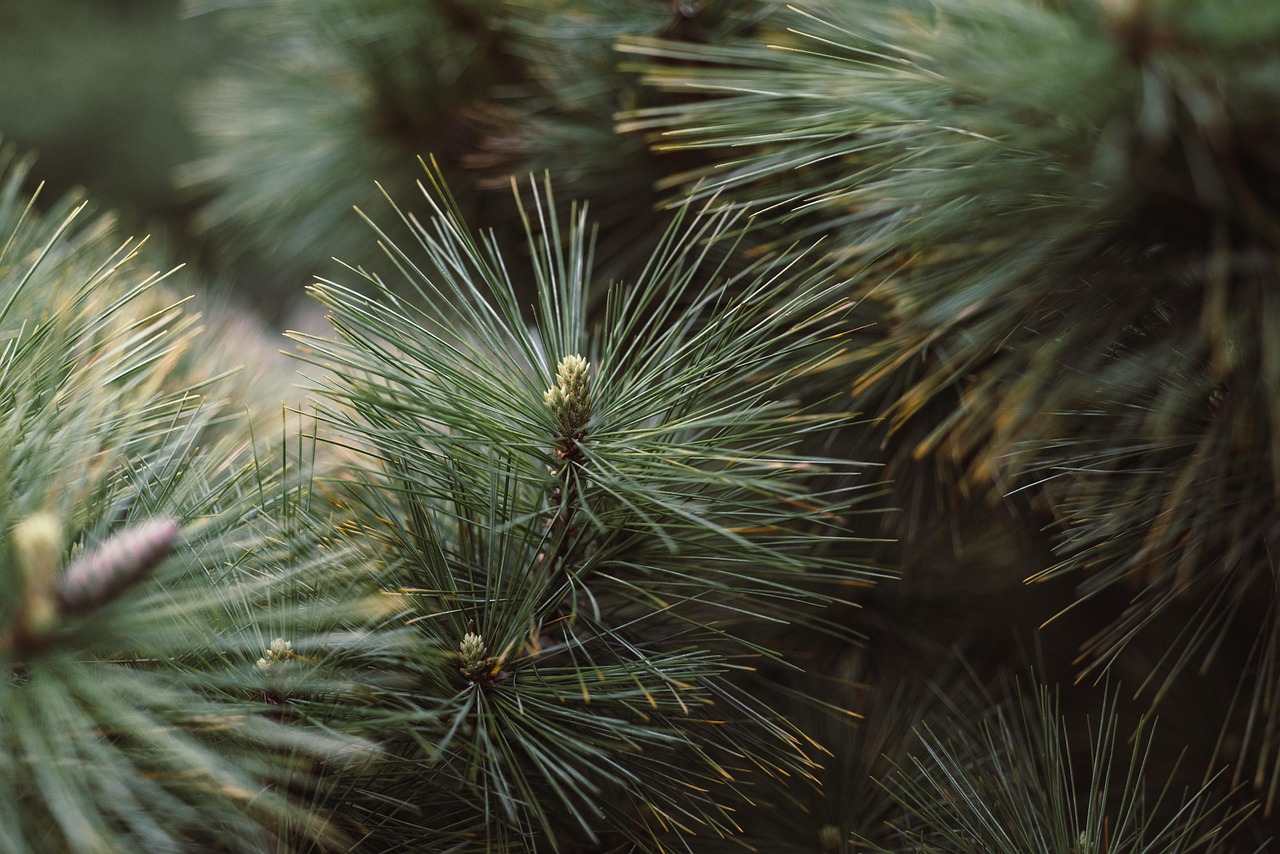When it comes to creating a visually appealing landscape, small evergreen shrubs stand out as true champions. These tiny titans not only offer year-round color but also provide structure and texture to gardens and outdoor spaces. Whether you have a small yard, a balcony, or a cozy garden nook, these versatile plants can enhance your environment beautifully.
Small evergreen shrubs are characterized by their ability to retain their foliage throughout the year. Unlike deciduous plants that shed their leaves in autumn, evergreens maintain their vibrant leaves, providing color even during the bleak winter months. This quality makes them particularly valuable for gardeners who want to ensure visual interest all year round.

Another noteworthy aspect of these shrubs is their adaptability. They can thrive in various climates and soil types, making them suitable for a wide range of gardening situations. Additionally, many small evergreen shrubs are low-maintenance, making them ideal for both novice and experienced gardeners. Their compact size allows them to fit into tight spaces or serve as ground cover, while their robust nature enables them to withstand harsh weather conditions.
Popular Small Evergreen Shrubs
There are numerous varieties of small evergreen shrubs available to gardeners. Each type comes with its unique characteristics, making it essential to choose the right ones for your specific needs. Below is a list of some popular options:
- Boxwood (Buxus spp.): Known for its dense growth and ability to be shaped into various forms, boxwood is a classic choice for formal gardens.
- Japanese Holly (Ilex crenata): This shrub features small, glossy leaves and works well as a low hedge or foundation plant.
- Dwarf Alberta Spruce (Picea glauca ‘Conica’): A slow-growing tree that maintains a conical shape, it adds height to smaller spaces.
- Blue Star Juniper (Juniperus squamata ‘Blue Star’): This shrub is appreciated for its striking blue foliage and compact form.
- Wintergreen Barberry (Berberis julianae): With its vibrant yellow-orange berries and thorny branches, this shrub offers seasonal interest.
To further understand the diversity of small evergreen shrubs, here is a table showcasing some key information about a few popular varieties:
| Shrub Name | Height | Width | Light Requirements | USDA Hardiness Zones |
|---|---|---|---|---|
| Boxwood | 2-15 ft | 2-15 ft | Full Sun to Partial Shade | 5-8 |
| Japanese Holly | 3-5 ft | 3-5 ft | Full Sun to Partial Shade | 6-9 |
| Dwarf Alberta Spruce | 3-10 ft | 3-10 ft | Full Sun | 2-6 |
| Blue Star Juniper | 1-3 ft | 2-4 ft | Full Sun | 3-7 |
| Wintergreen Barberry | 3-5 ft | 3-5 ft | Full Sun to Partial Shade | 5-8 |
The variety in size, color, and texture among these plants allows gardeners to create stunning displays. By selecting the right small evergreen shrubs, you can design your garden to show off beautiful greenery throughout the seasons.
In addition to aesthetics, small evergreen shrubs provide practical benefits. They can act as windbreaks, noise barriers, and privacy screens. Their root systems also help stabilize soil, preventing erosion. As such, they are not only visually appealing but also environmentally beneficial.
This combination of beauty and functionality makes small evergreen shrubs an excellent choice for any landscape design. Whether you’re looking to create a lush garden or simply add some greenery to your space, these shrubs can meet your needs while offering delightful year-round appeal.
Choosing the Right Small Evergreen Shrubs
Selecting the right small evergreen shrubs for your garden involves considering several factors. Each shrub has unique characteristics that can either enhance or detract from your outdoor space. Understanding your specific needs and the conditions of your garden is crucial in making the best choice.
Climate Considerations
The local climate significantly influences which shrubs will thrive in your garden. It’s important to select plants that are well-suited to your area’s temperature ranges, humidity levels, and rainfall patterns. Here are some tips to consider:
- USDA Hardiness Zones: Check the USDA hardiness zone map to find out which plants are suitable for your region.
- Temperature Extremes: Consider how cold or hot your area gets during different seasons.
- Moisture Levels: Determine if your garden tends to retain moisture or if it dries out quickly, and choose accordingly.
Soil Type and Quality
The type of soil in your garden can affect the growth of small evergreen shrubs. Different shrubs have varying soil preferences, such as pH levels and drainage capabilities. Here are some factors to keep in mind:
- Soil Drainage: Ensure the soil drains well. Some shrubs may develop root rot if planted in overly wet soil.
- Nutrient Content: Test your soil for nutrients. You may need to amend it with compost or fertilizers to provide adequate nourishment.
- pH Levels: Some shrubs prefer acidic soils, while others thrive in alkaline conditions. Check the pH level before planting.
Sunlight Requirements
Different small evergreen shrubs have varying light requirements. Some thrive in full sun, while others prefer partial shade or full shade. As you plan your garden, consider the sunlight exposure in different areas:
- Full Sun: Areas that receive at least six hours of direct sunlight per day are ideal for sun-loving shrubs.
- Partial Shade: These areas receive some direct sunlight but are shaded for part of the day.
- Full Shade: Areas that receive less than three hours of direct sunlight are suitable for shade-loving varieties.
Designing with Small Evergreen Shrubs

Incorporating small evergreen shrubs into your garden design can enhance its overall appeal. These plants can serve various purposes, from creating focal points to providing privacy. Here are some design ideas:
Create Focal Points
Using small evergreen shrubs as focal points can draw attention to specific areas in your garden. Consider the following approaches:
- Single Specimen Planting: Plant a standout shrub in a prominent location to create visual interest.
- Group Planting: Cluster several shrubs together for a more dramatic effect.
- Contrasting Textures: Combine different types of shrubs to create a layered look that captures attention.
Privacy Screens and Windbreaks
If privacy is a concern, small evergreen shrubs can effectively create screens or windbreaks. They can block unwanted views and harsh winds while adding beauty to your landscape. Consider these strategies:

- Dense Planting: Plant shrubs closer together to form a thick barrier.
- Layering Heights: Use varying heights of shrubs for a more natural look while ensuring coverage.
- Mixing Varieties: Combine different species for increased density and visual appeal.
By carefully choosing and arranging small evergreen shrubs, you can create a garden that is not only aesthetically pleasing but also functional throughout the year.
Maintaining Small Evergreen Shrubs

Once you have selected and planted your small evergreen shrubs, proper maintenance is essential to ensure their health and longevity. These plants require specific care to flourish and continue providing year-round beauty to your garden.
Watering Practices
Watering is a crucial aspect of shrub maintenance. While small evergreen shrubs are generally hardy, they still need adequate moisture, especially during their establishment phase. Here are some tips for effective watering:
- Initial Watering: After planting, water the shrubs thoroughly to help them settle into their new environment.
- Regular Watering: During dry spells, ensure the shrubs receive consistent moisture, particularly in the first two years.
- Soil Check: Before watering, check the soil’s moisture level by sticking your finger about an inch into the soil. If it feels dry, it’s time to water.
Fertilization Techniques
Fertilizing small evergreen shrubs can promote healthy growth and vibrant foliage. However, over-fertilization can lead to excessive growth or damage. Consider the following guidelines:
- Timing: Fertilize in early spring just as new growth begins. This timing allows the shrubs to utilize nutrients effectively.
- Type of Fertilizer: Use a balanced, slow-release fertilizer suitable for evergreen plants.
- Application: Follow package instructions carefully regarding the amount and method of application to avoid root burn.
Pruning for Health and Shape
Pruning is an important maintenance task that helps maintain the shape and health of small evergreen shrubs. Regular pruning encourages new growth and prevents overcrowding. Here are some pruning tips:
- Timing: The best time to prune most small evergreen shrubs is in late winter or early spring before new growth begins.
- Removing Dead or Diseased Wood: Always remove any dead, damaged, or diseased branches to promote healthier growth.
- Shaping: Trim back excessive growth to maintain a desirable shape and size without removing too much foliage.
Pest and Disease Management
Like all plants, small evergreen shrubs can be susceptible to pests and diseases. Being proactive in monitoring your plants can help you catch issues early. Here are some common problems to watch for:
Common Pests
Pests can damage foliage and overall plant health. Some of the most common pests for small evergreen shrubs include:
- Aphids: These small insects suck sap from leaves, leading to wilting and discoloration.
- Spider Mites: Tiny pests that can cause stippling on leaves; they thrive in dry conditions.
- Scale Insects: These pests attach themselves to stems and leaves, creating a sticky residue and promoting sooty mold.
Disease Prevention
Diseases can also affect small evergreen shrubs. Here are some common issues and prevention tips:
- Fungal Diseases: Root rot and leaf spot can occur in overly wet conditions. Ensure proper drainage and avoid overhead watering.
- Bacterial Blight: Look for wilting or browning leaves. Proper air circulation aids in prevention.
- Regular Inspection: Frequently check your shrubs for signs of pests or diseases to catch problems early.
By following these maintenance practices, small evergreen shrubs can thrive and continue to enhance your garden with their year-round color and structure. Active care ensures that they remain healthy and vibrant for years to come.
Seasonal Interest with Small Evergreen Shrubs
One of the most appealing aspects of small evergreen shrubs is their ability to provide seasonal interest. Unlike many flowering plants that have a brief blooming period, these shrubs offer continuous beauty throughout the year. Their evergreen nature ensures that your garden remains vibrant, regardless of the season.
Spring Awakening
As spring arrives, small evergreen shrubs begin to show signs of new growth. Fresh, bright foliage emerges, often accompanied by subtle blooms. These early flowers can attract pollinators and provide a welcome splash of color against the backdrop of awakening gardens. Some shrubs, like the Japanese Holly, may produce small, inconspicuous flowers that add to the overall appeal without overwhelming the landscape.
Summer Vibrancy
During the summer months, small evergreen shrubs serve as the backbone of your garden design. Their lush green foliage provides a rich contrast to the vibrant colors of summer flowers. This creates a harmonious balance in your garden. Many evergreens also serve as excellent backdrops for annuals and perennials, allowing you to change the look of your garden with seasonal plantings.
Autumn Hues
As autumn approaches, some small evergreen shrubs may display subtle changes in color. While they do not change as dramatically as deciduous plants, certain varieties can exhibit bronze or gold tints. Additionally, their structure and form become more prominent as other plants begin to fade, providing a beautiful framework for your fall landscape.
Winter Resilience
In winter, small evergreen shrubs shine like stars in a snowy landscape. Their vibrant foliage stands out against the starkness of winter. They can provide essential shelter for birds and other wildlife during harsh weather conditions. The presence of these shrubs can create visual interest and a sense of warmth, even in the coldest months.
Final Thoughts
Small evergreen shrubs are truly the tiny titans of year-round color and structure in any garden. Their ability to adapt to various environmental conditions makes them an invaluable addition to landscaping designs. From providing privacy screens and windbreaks to enhancing seasonal interest, these resilient plants offer numerous benefits.
Proper selection, planting, and maintenance are key elements that contribute to the success of these shrubs in your landscape. Understanding your local climate, soil conditions, and sunlight availability will help you choose the best varieties for your garden. With regular care—including watering, fertilization, pruning, and pest management—you can ensure that your small evergreen shrubs remain healthy and vibrant.
Ultimately, by incorporating small evergreen shrubs into your outdoor spaces, you can create a dynamic and inviting environment that flourishes throughout the seasons. Whether you are looking to establish a formal garden or a relaxed landscape, these plants will provide the foundation for beauty and resilience in your garden for years to come.
